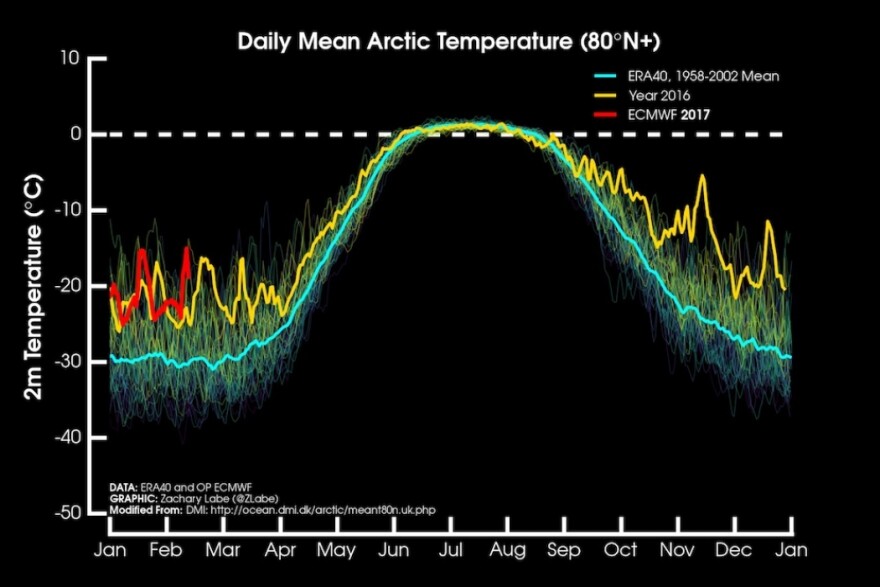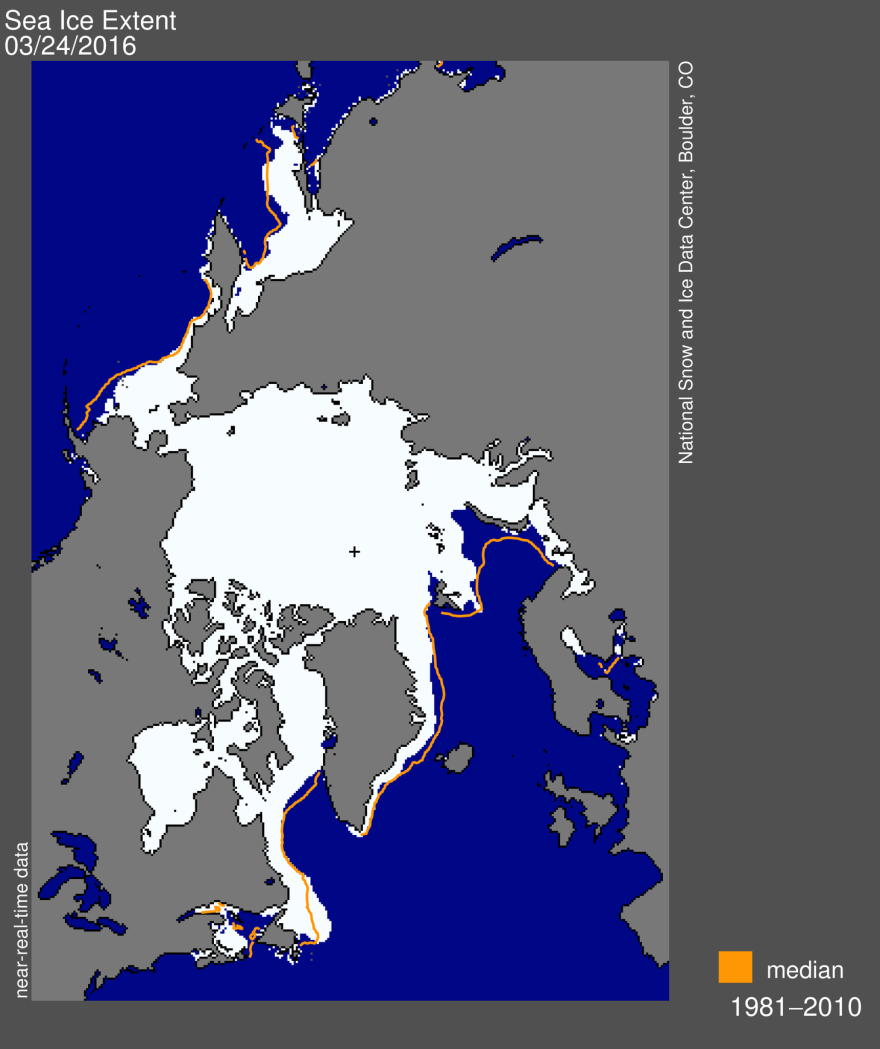An ever-shrinking Arctic polar ice cap …
As the mercury plummeted to 40 below last weekend in Alaska’s Interior, temperatures around the North Pole topped-out some 70 degrees higher – about 32 degrees Fahrenheit, some 50 degrees Fahrenheit warmer than normal at the pole.
“I’ve been looking at the Arctic for 35 years, and I’ve never seen anything like this before,” says Mark Serreze, a senior research scientist with the National Snow and Ice Data Center.
Serreze says warm air pushed into the Arctic by powerful storms were likely the main reason for the Feb. 10th temperature spike. He says above-average air and sea-surface temperatures last month were the main factors that led to the Center declaring a record-low Arctic sea-ice cover for the month of January.

“We’ve put all this warm air into the atmosphere of the Arctic. That affects the jet stream pattern – it basically attracts the big storms up into the Arctic,” he said. “But that keeps it warm and that keeps it free of sea ice.”
Serreze says it’s likely warmer-than-average conditions in the Arctic will persist and continue to limit sea-ice formation. And he says that will probably lead the Center to announce another record when the so-called maximum sea-ice extent is announced in March.
“So, we could be looking at what we call a record-low maximum,” he said.

Serreze says monitoring sea-ice formation, or lack thereof, has become an important indicator of the relatively rapid warming under way in the Arctic. And he says researchers increasingly are studying the ice for clues on how its absence is impacting other parts of the planet.
“The bigger concerns out there is how that loss of sea ice affects regions beyond the Arctic,” he said, adding, “Does the loss of sea ice affect weather patterns outside the Arctic?”
Serreze says if these warmer-than-average conditions persist, the Arctic polar ice cap could disappear in late summer within a couple of decades.
“We could be seeing a summer say, late August early September, essentially free of sea ice as early as 2030. That would be, basically, you look at it from space and it’s a blue ocean.”
If that estimate proves true, it would shave off at least a decade or two from the previously widely cited prediction of an ice-free Arctic by mid-century.



